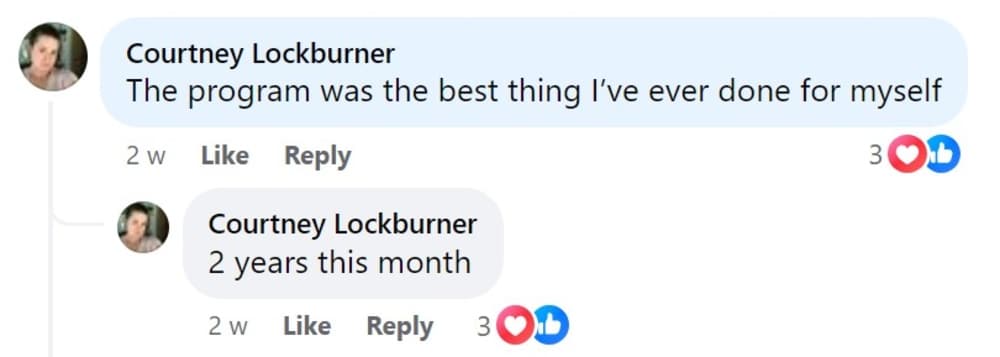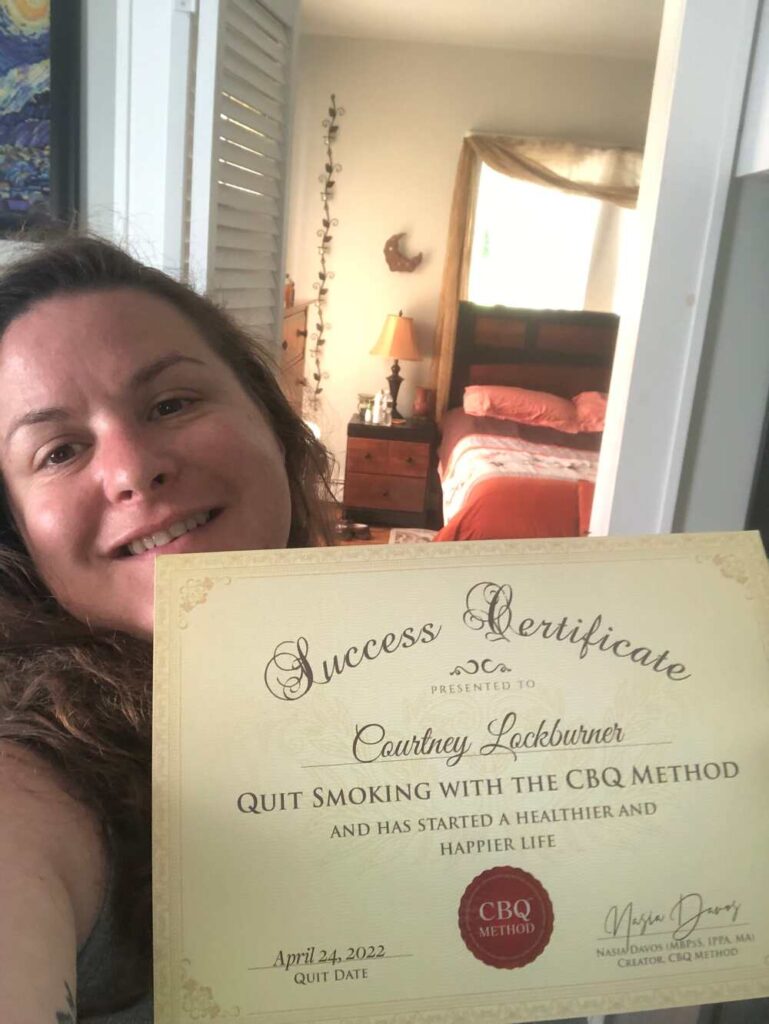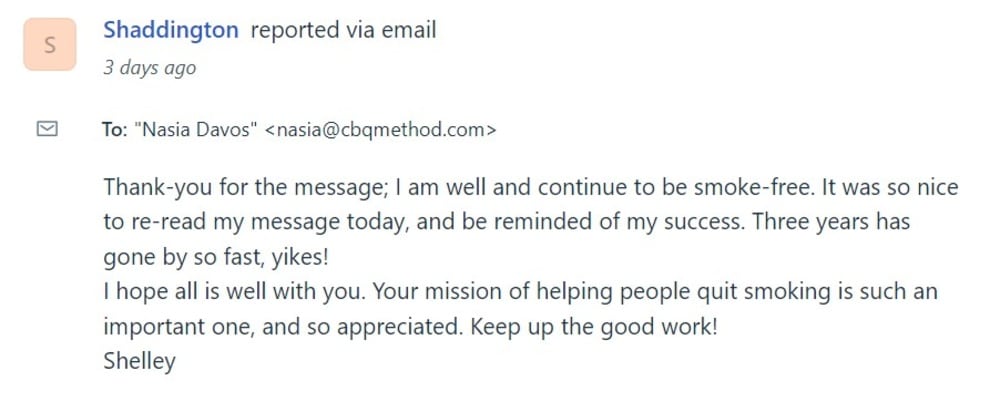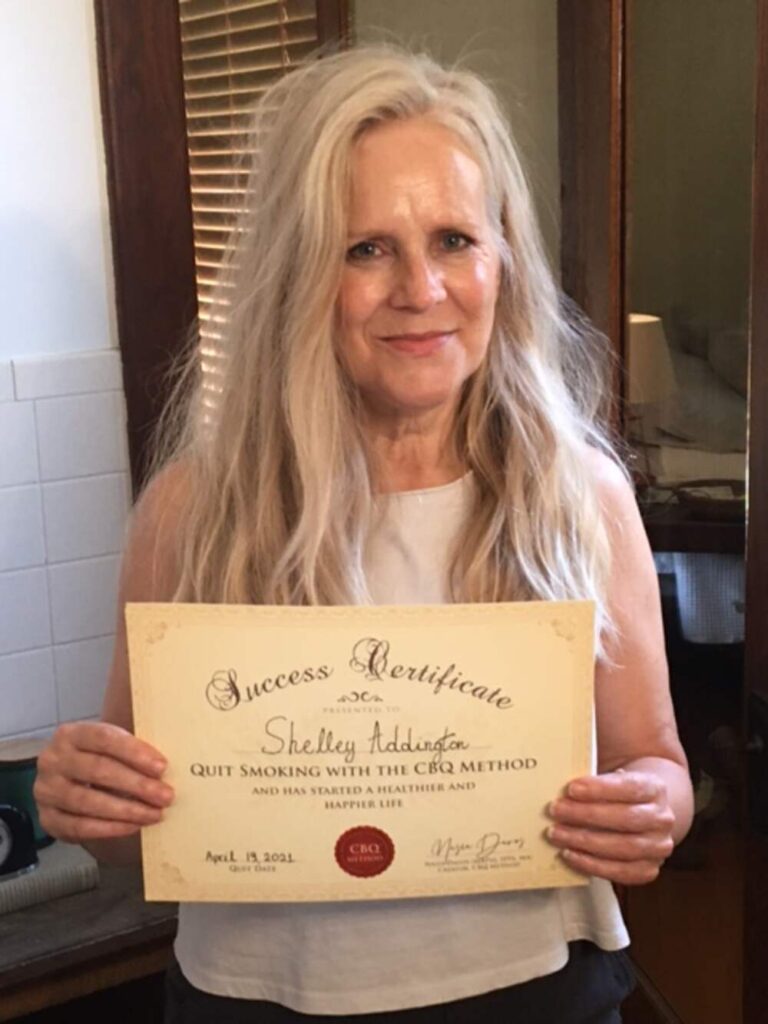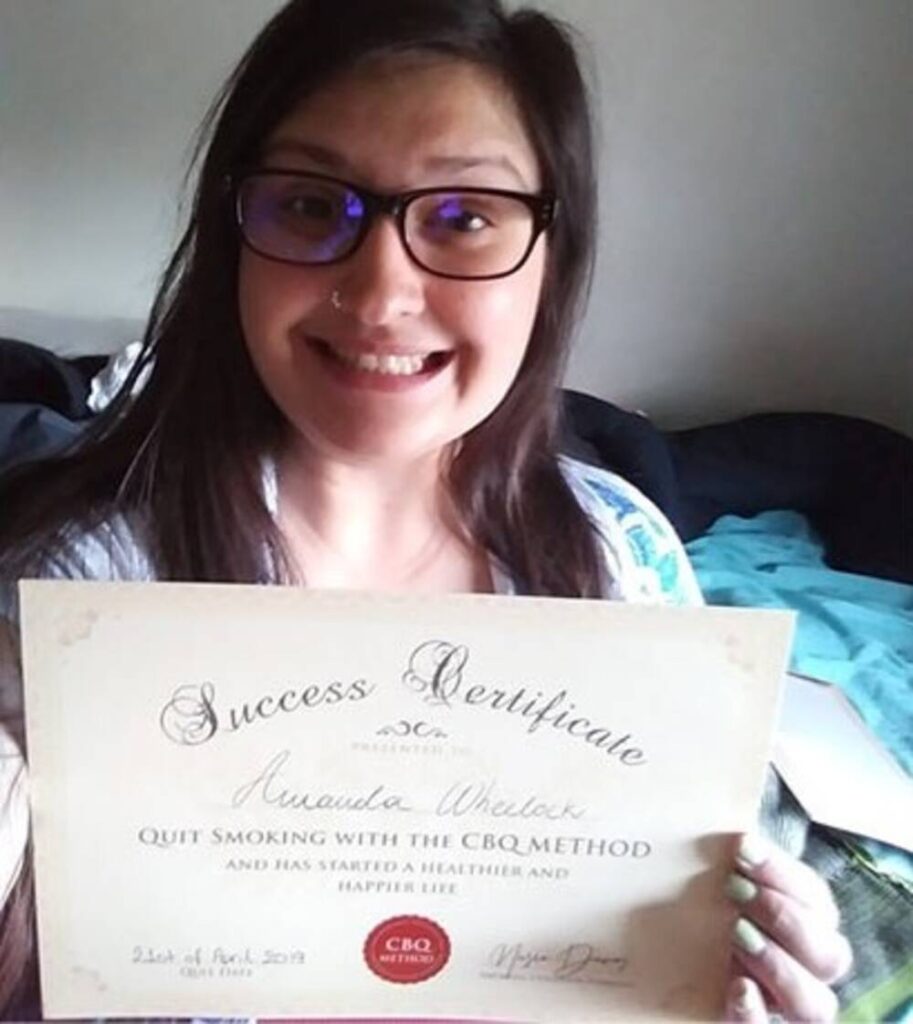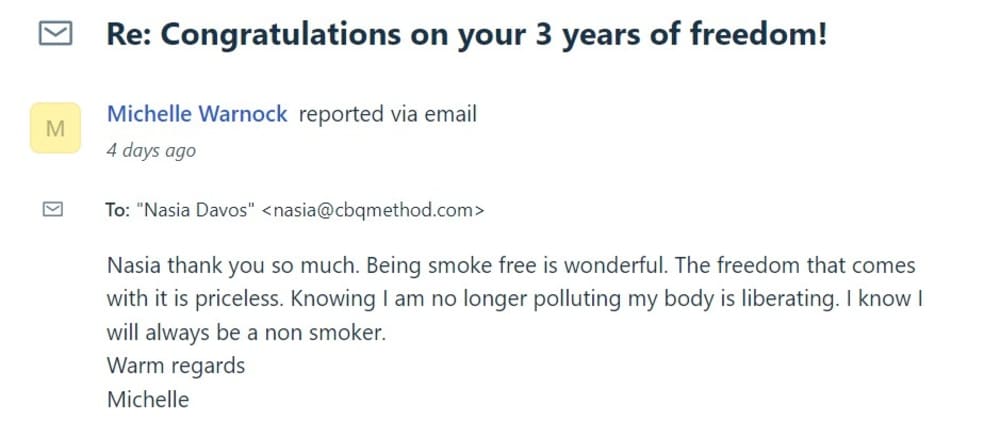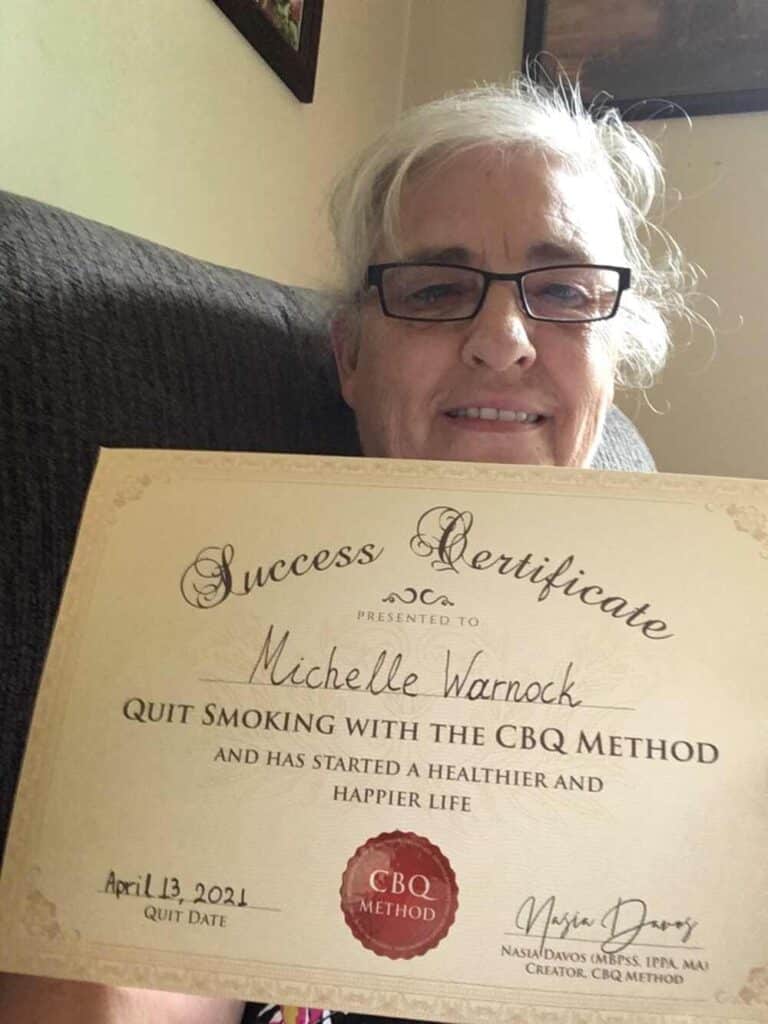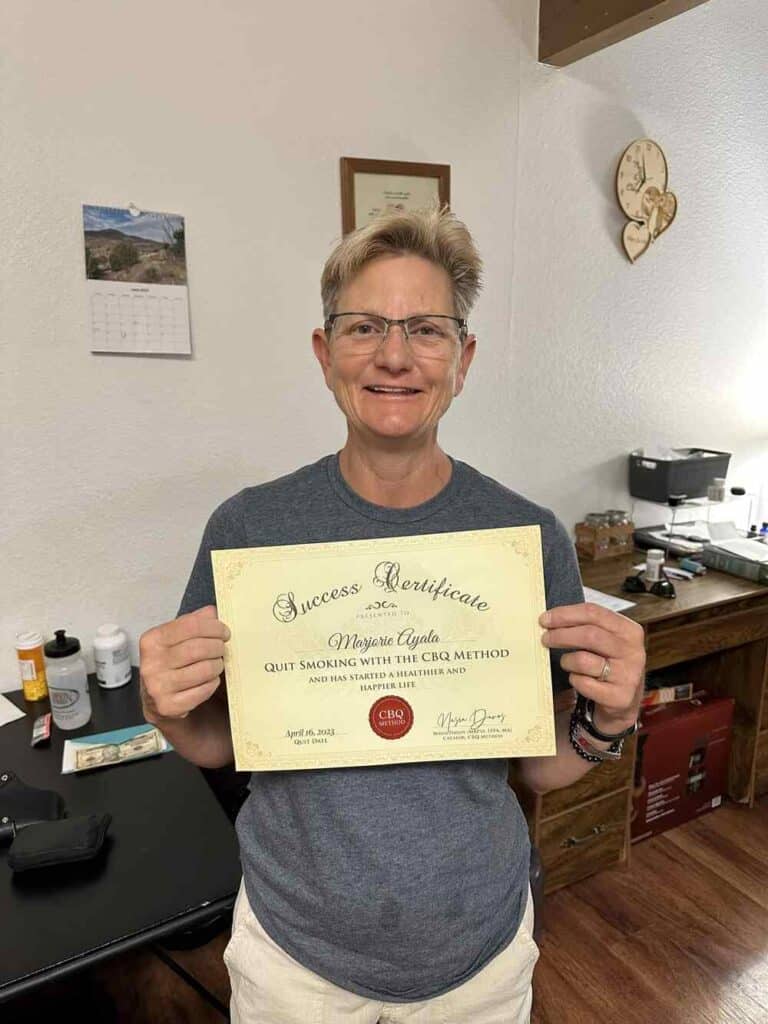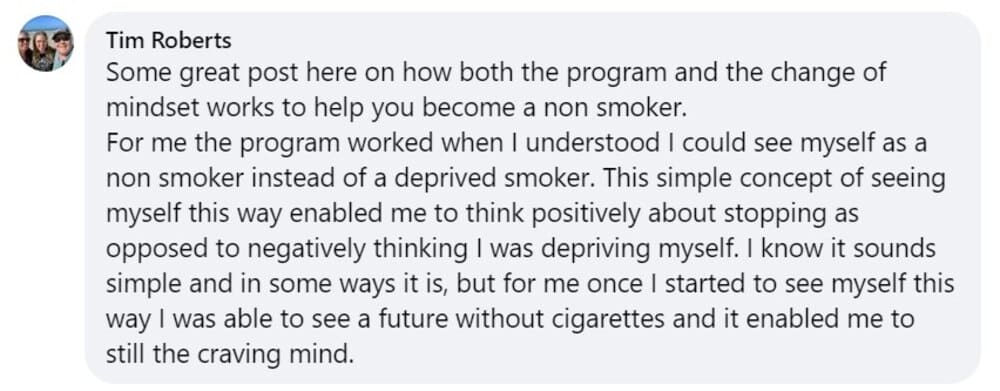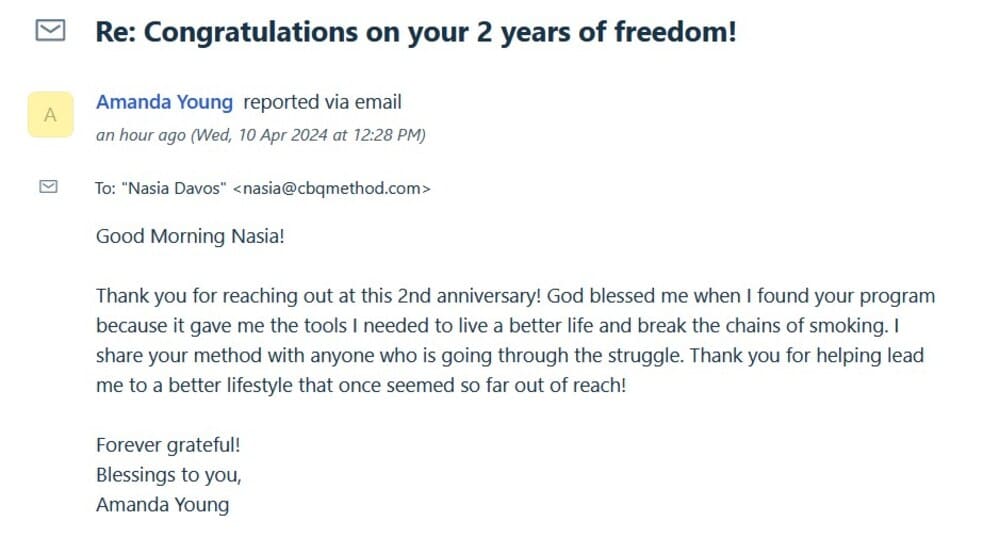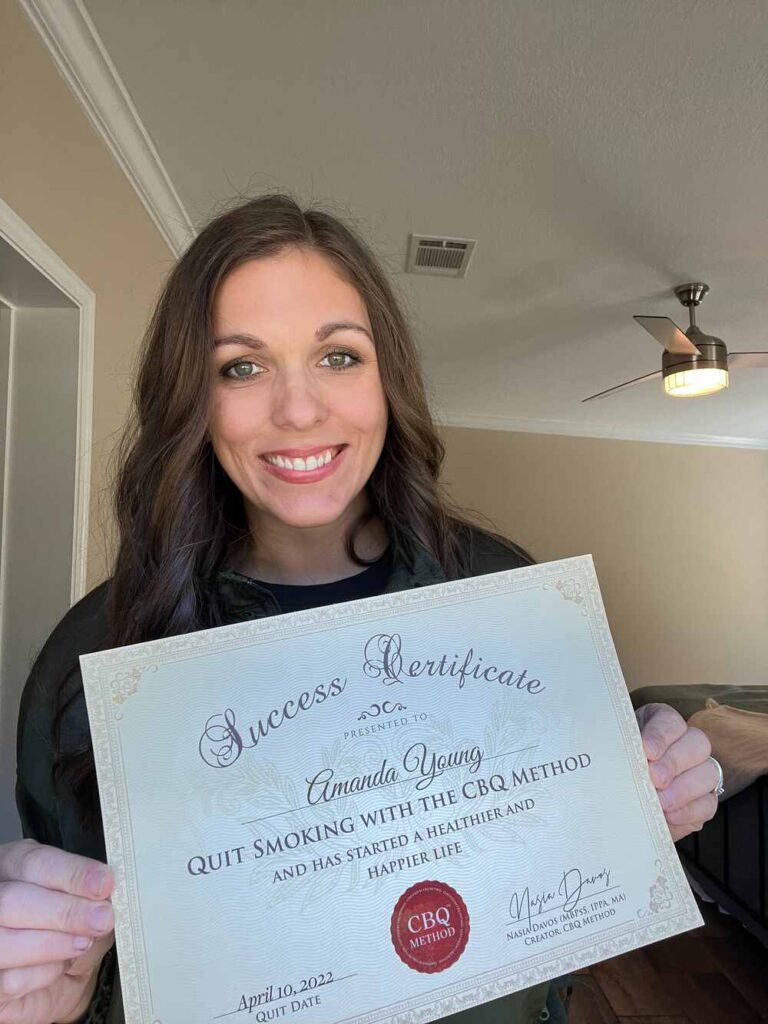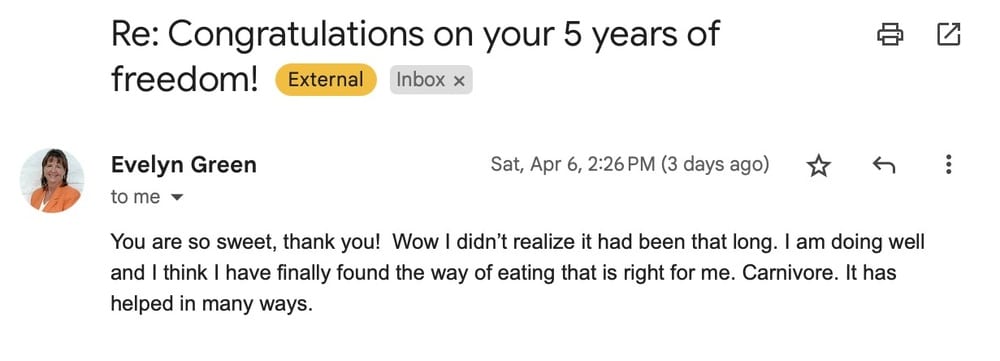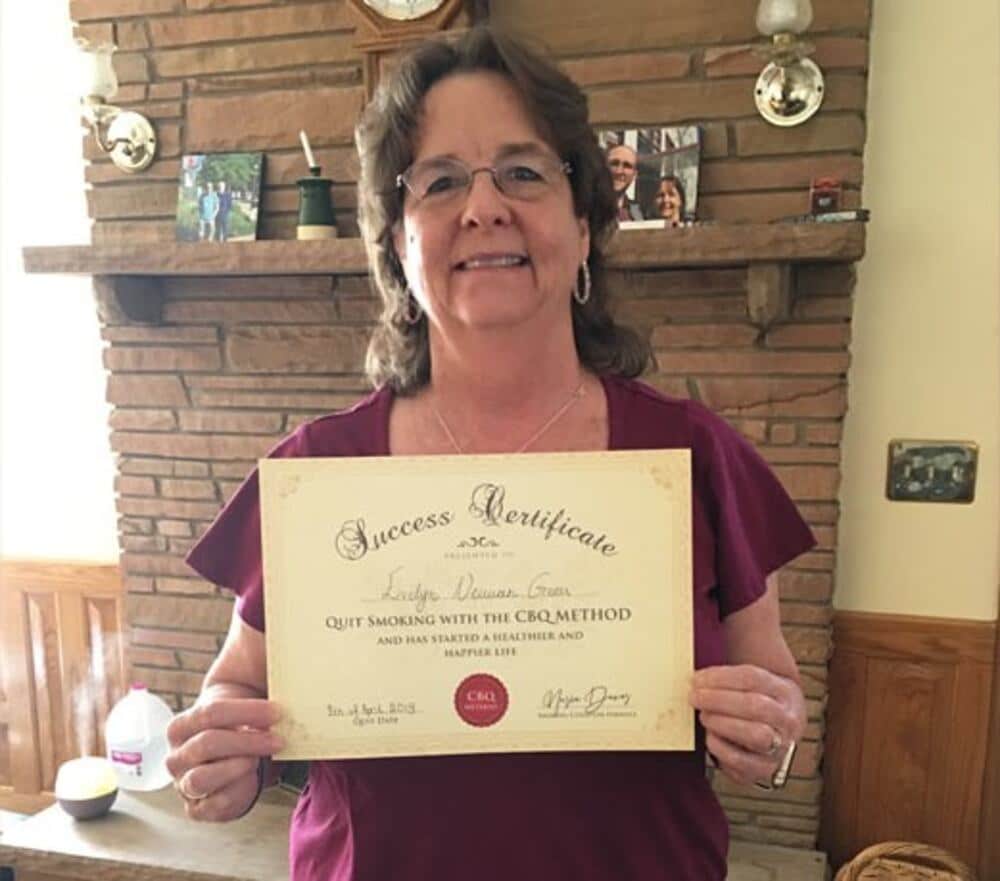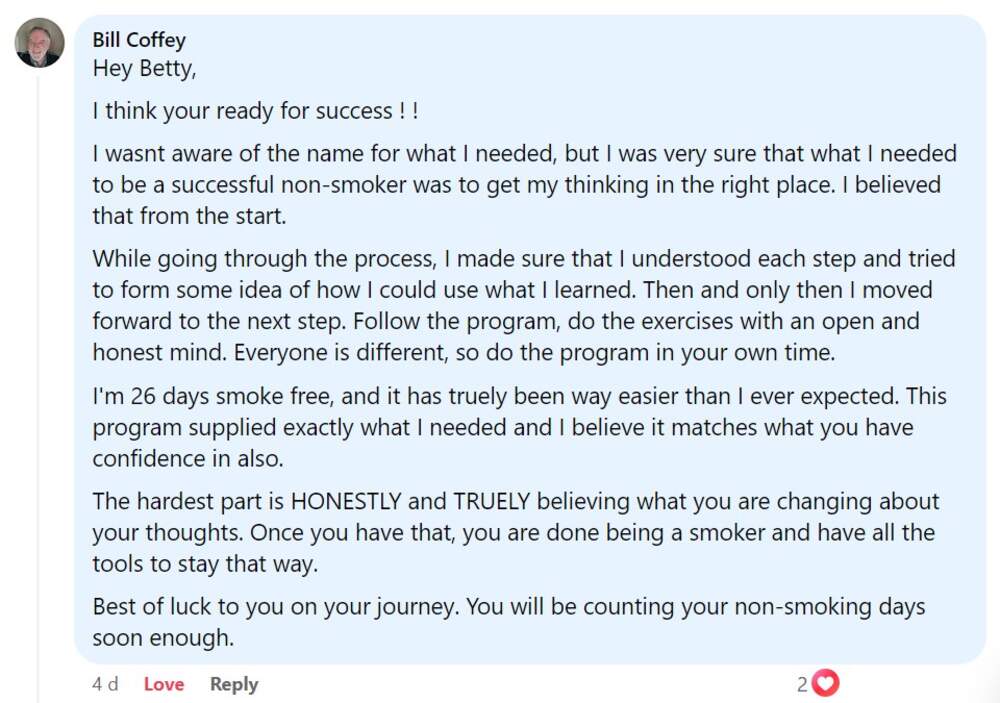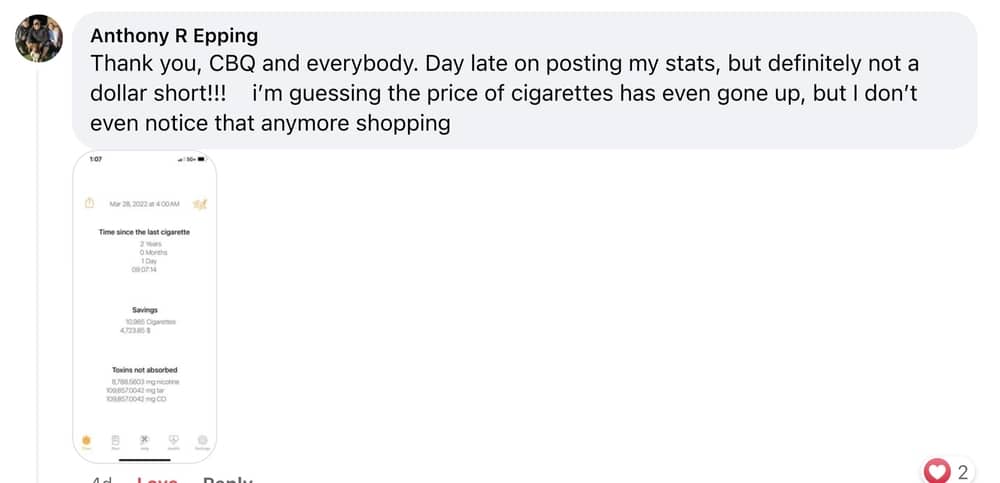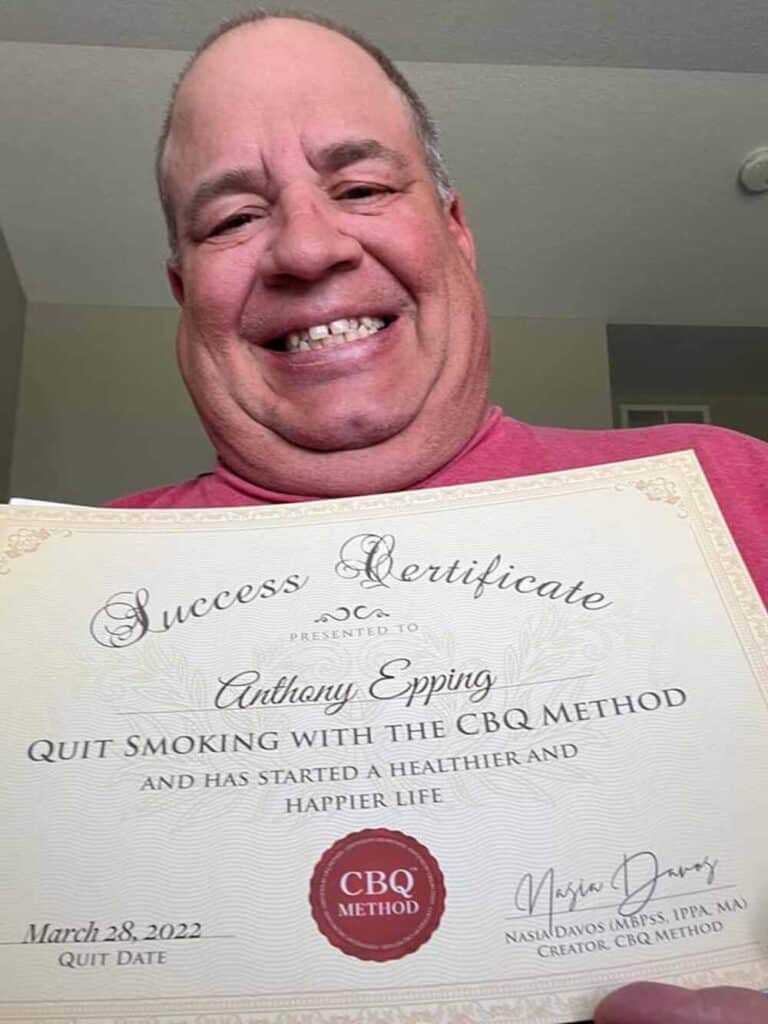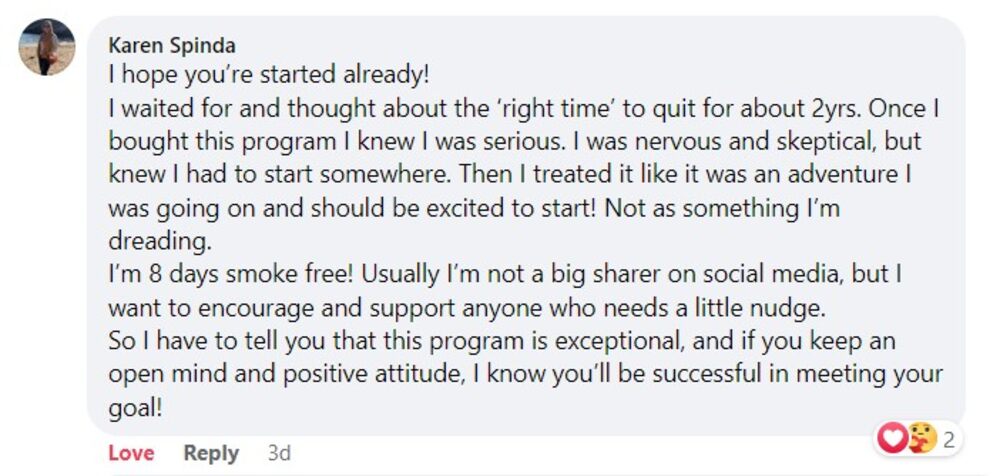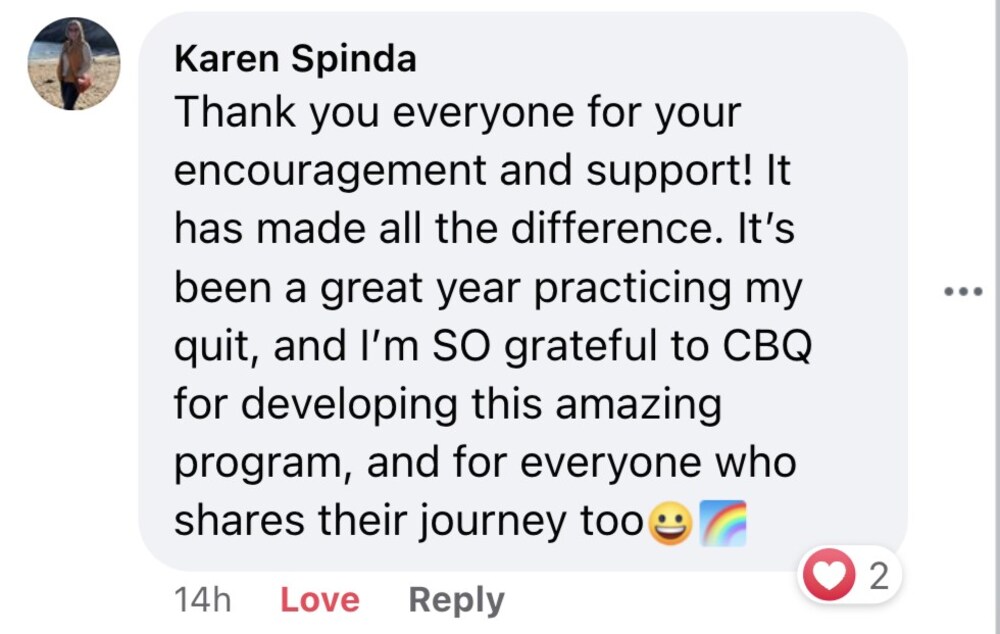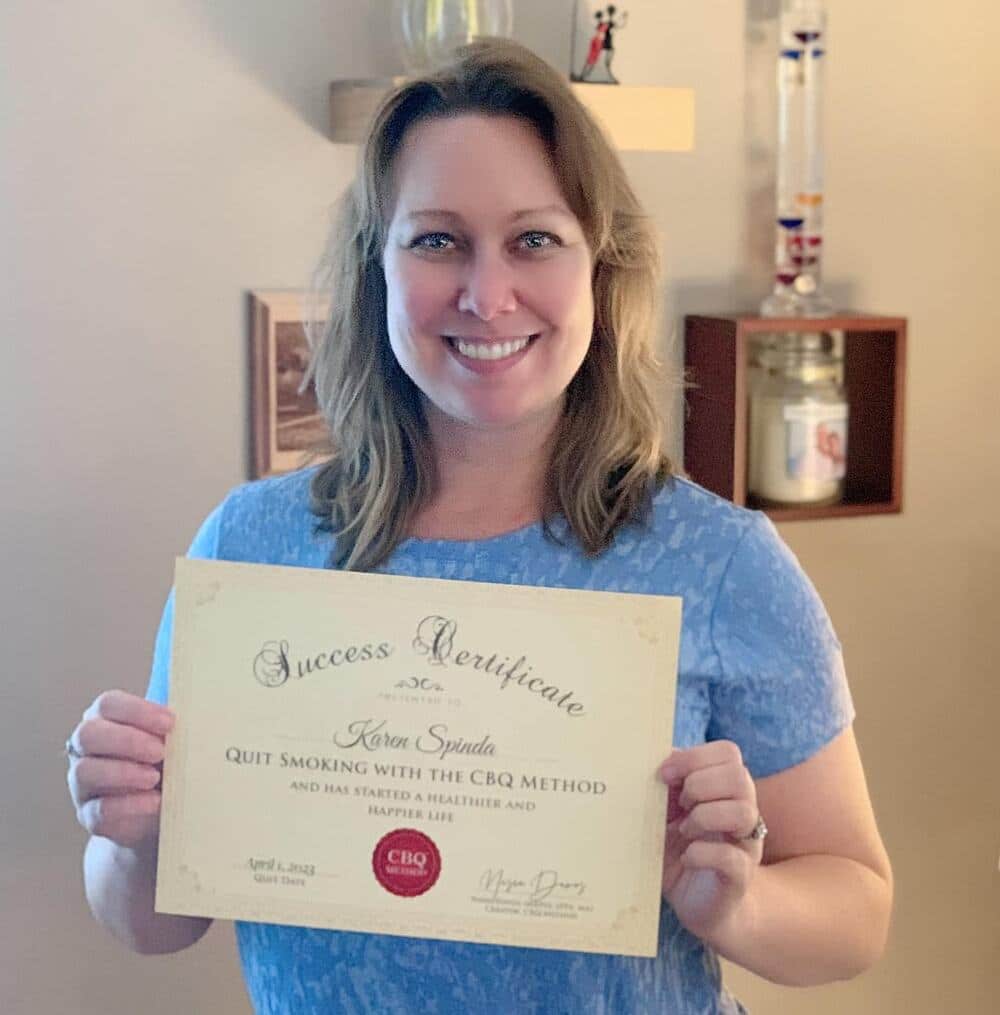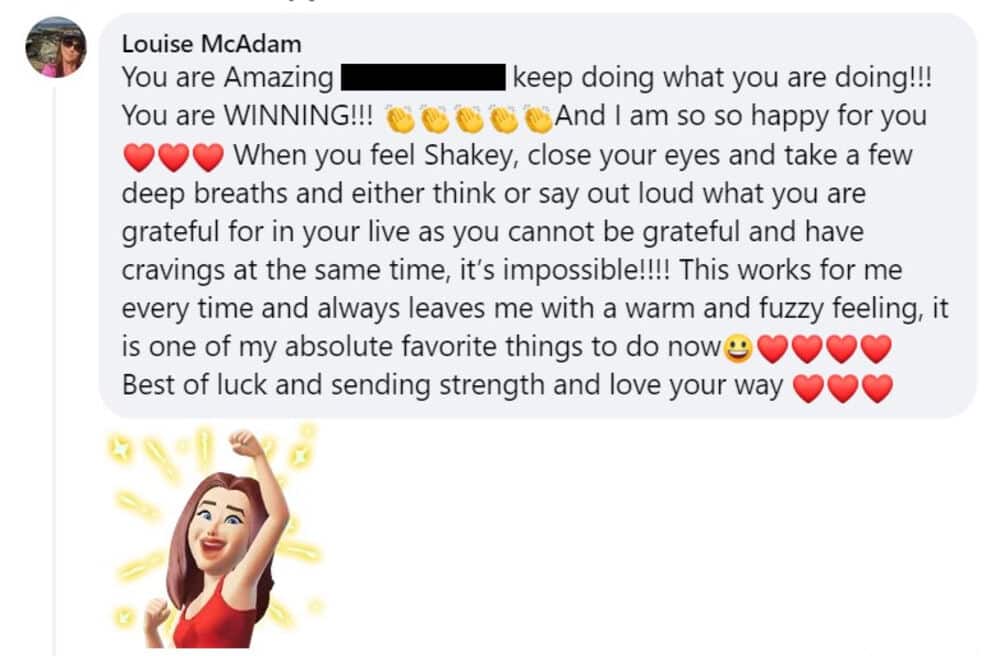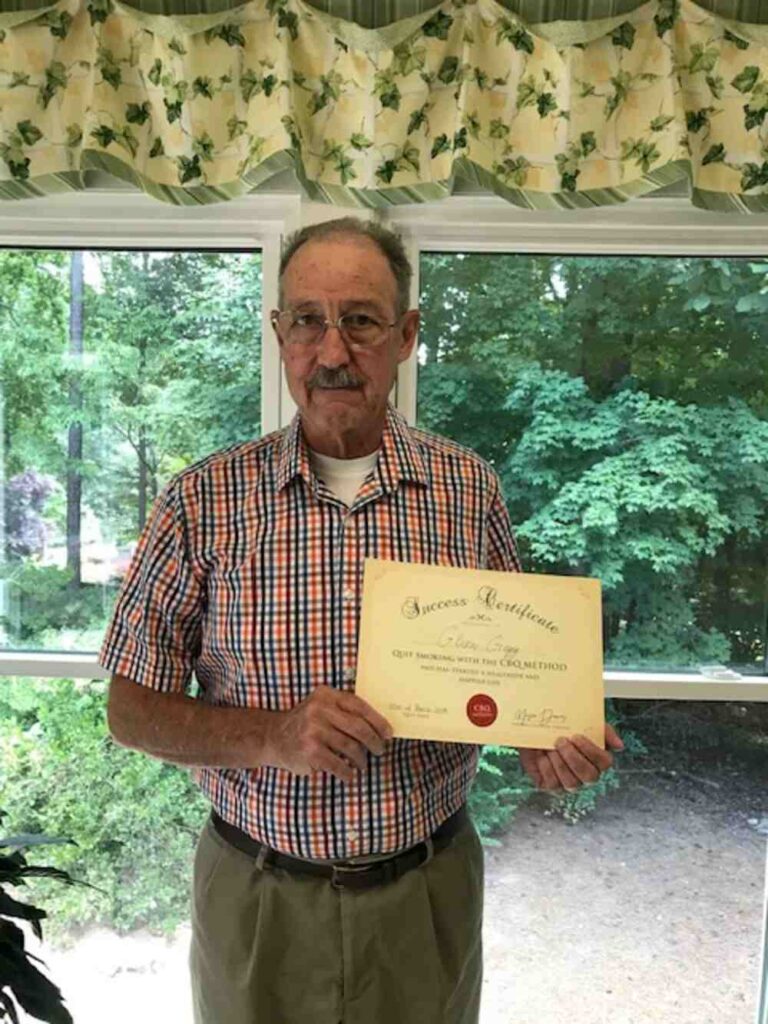Happy “Spotlight Day” and happy new month! Today, I’m excited to share with you this week’s most inspiring success stories and tips from the CBQ community.
Let’s dive in 🙂
Inspiring Transformation
Yesterday, CBQ Program member Valerie Bennett from England, UK, celebrated five years smoke-free! Val’s transformation has been inspirational, to say the least. She used to smoke two packs a day for 40 years. As she told me during our Ask An Ex interview, she didn’t get out of bed in the morning before smoking two cigarettes with her coffee.
One day, while browsing Facebook, Val came across the CBQ Method and, after lots of research, decided to join the CBQ program. She quit “cold turkey” in the middle of the program and has not looked back ever since. In her own words, “I am so proud of this achievement – from being in a place where I thought it would be impossible to now being able to wake up knowing I am now a nonsmoker and can do so much more with my life and feel so much better.”
Since quitting smoking, Val has saved over £17,000. A life-changing amount that keeps growing.
This is what Val posted on our community and her advice for those who are afraid to stop smoking:
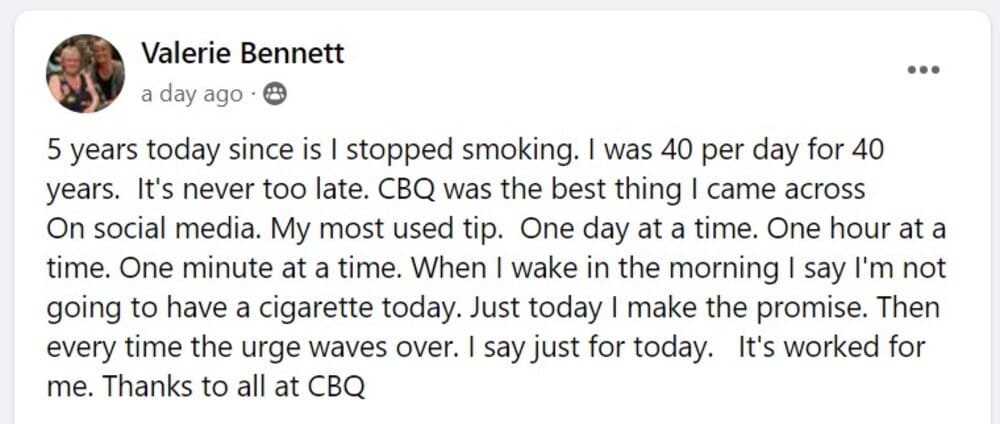
Inspiring Milestone
This week, CBQ Program member Trevor Starr from Vermont, US celebrated 6 years smoke-free. 6 years! Trevor was no stranger to quit smoking attempts. He wanted to be healthier, but at the same time, smoking was an inseparable part of his life. As Trevor told me, when he came across the CBQ Program, he felt hopeful that it could work. When he started the program, he was still worried about feeling deprived, gaining weight, and failing – but he decided to commit to the process. The result? Trevor quit smoking, completely transformed his life, and lost 35 pounds! He said: “I used to wake up and smoke, then have coffee and smoke, then drive to work and have a smoke. Now, I wake up and exercise every morning, and I love it. I don’t even think about smoking. I love this program, and I’m telling all my smoker friends about it.”
This is Trevor with his CBQ Success Certificate about 1 year after quitting smoking.
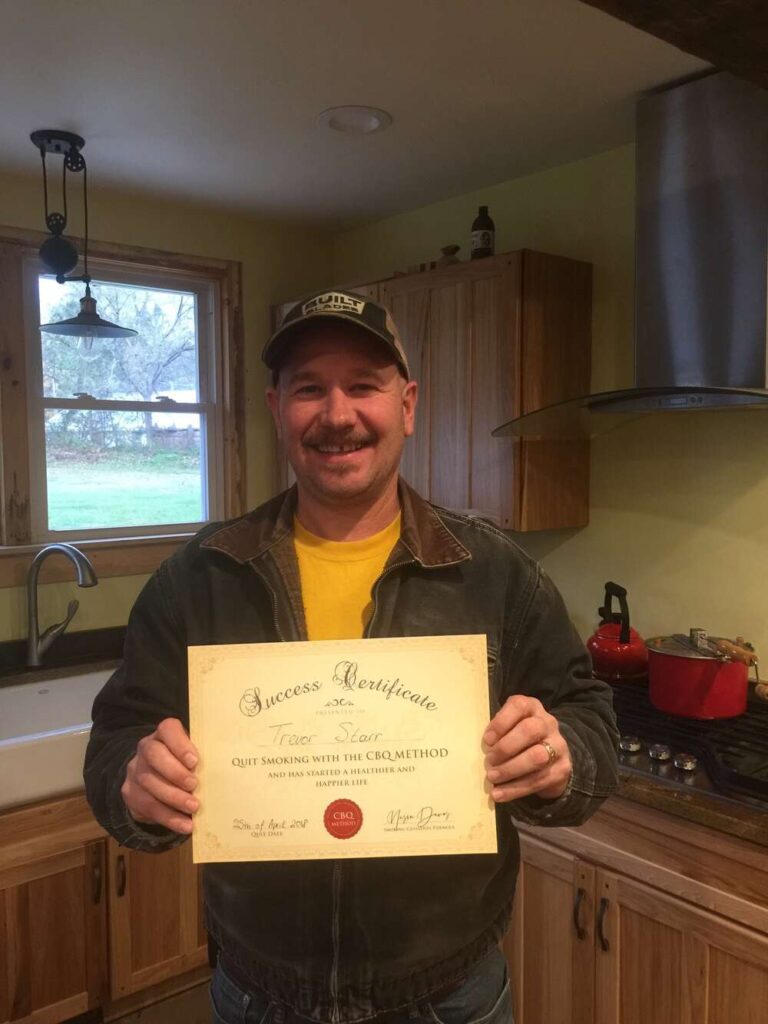
6 years after his quit date, Trevor is still a happy nonsmoker. This is what he shared a few days ago:

Inspiring Couple
This week, CBQ Program member Ernesto Castagna from New York, US, celebrated 6 months smoke-free. Quitting smoking was a huge accomplishment for Ernesto. After his 1-month milestone, he felt like a champion and got himself a very appropriate (and unique) gift:
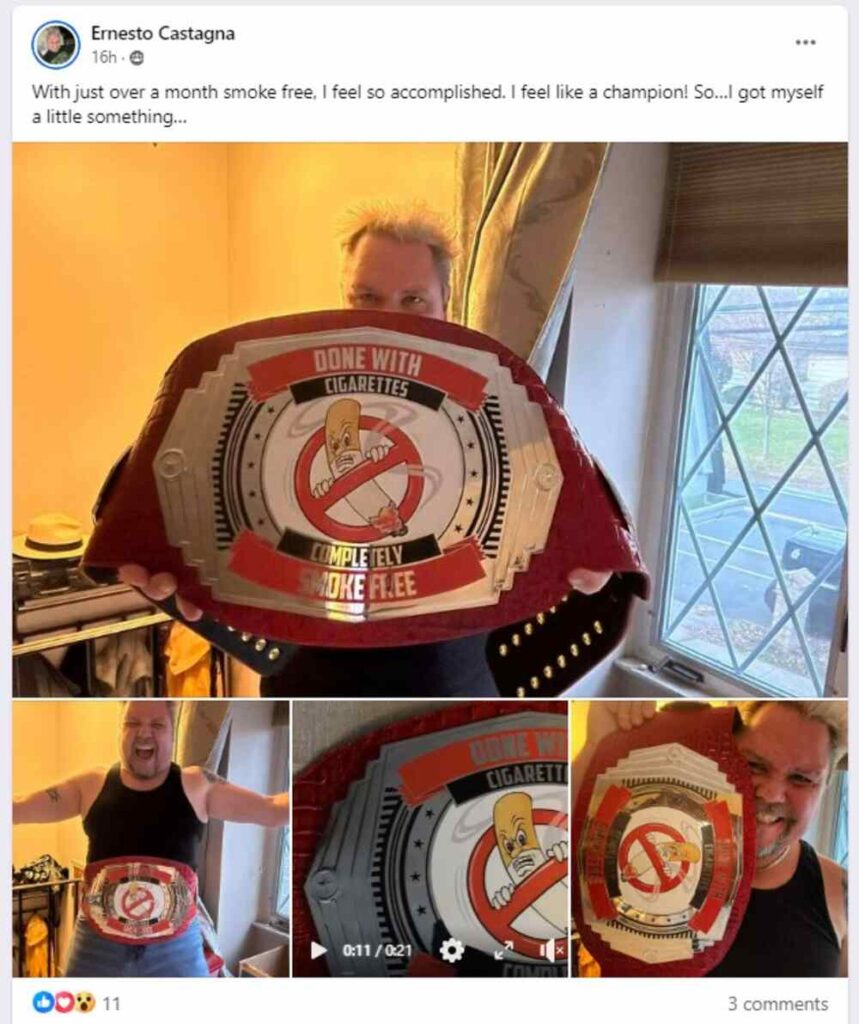
Three months after his quit date, his fiancée Faith also quit smoking! Together they took their first vacation as nonsmokers, and this week, they shared this beautiful photo with their CBQ Success Certificates…. from their cruise!
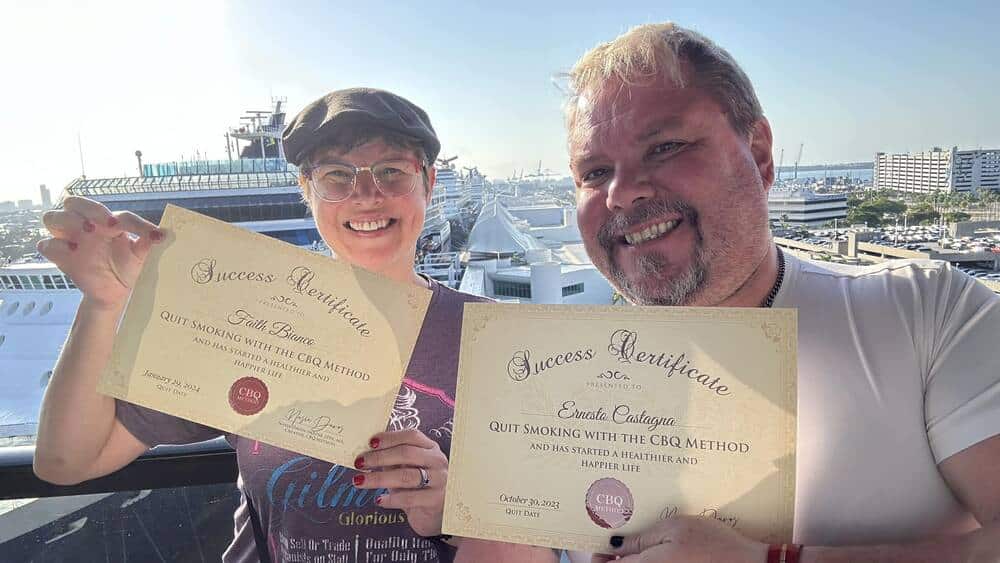
Tip of the Week
This week’s tip comes from CBQ Program member Angela Battista from Massachusetts, US, who broke a 48-year addiction to nicotine!
Angela’s Tip: Change your thoughts.
“I, like you, tried to quit many times during my 48 years of smoking. With this program and support and my new mindset that smoking is not something I do or enjoy I am working on 8 months. Like you I always had some sort of reason for smoking bored, stressed, habit and it just seemed too hard to quit. I rarely think about smoking now and when I do it is never a positive thought. You can do this.”

As always, a big thank you goes out to all of our amazing members who gave me permission to share their stories with you.

